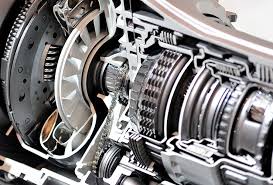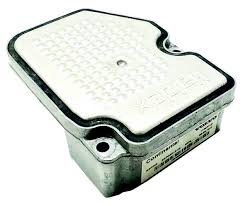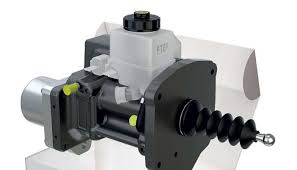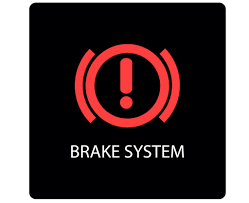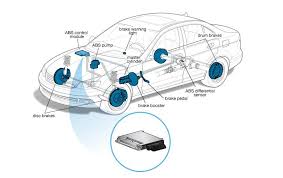Understanding and Maintaining the ABS Module: Essential Guide
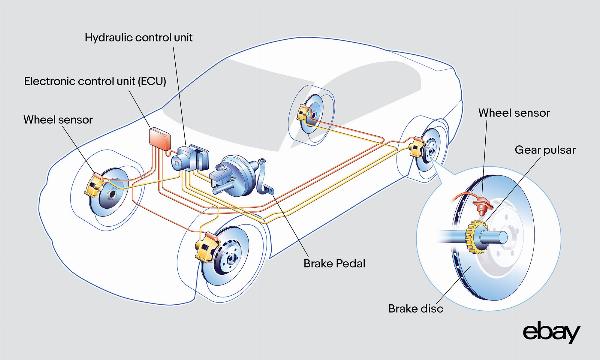
Strong 8k brings an ultra-HD IPTV experience to your living room and your pocket.
The Anti-lock Braking System (ABS) helps modern automotive vehicles to prevent wheel lockups to enhance the capacity of maintaining vehicle control. The ABS module, placed in the ratio, would take the responsibility for managing the data from wheel speed sensors to optimize the brake linearity pressure, therefore to reduce the frequency of accidents caused by the wheel locks. This blog will walk you through with the function of the ABS module, common issues, troubleshooting guides and maintenance tips to ensure your ABS module works effectively and properly.
What is an ABS Module?
The ABS module, or Anti-lock Braking System module, ABS control module, or ABS control unit, monitors and controls the Anti-lock Braking System by receiving data from wheel speed sensors, analyzing it, and taking corrective action when necessary by modulating brake pedal pressure in order to prevent locks, which would otherwise result in the loss of vehicle control, and thereby a skid.
Key Features of the ABS Module
Real-Time Data Processing
The ABS module continually monitors data from wheel speed sensors, and adjusts brake pressure on the fly to prevent the wheels from locking up.
Integrated Safety System
The ABS module works in conjunction with other vehicle safety systems that are intelligent about such things. So, if you begin to lose control of your vehicle, your Electronic Stability Control (ESC) and traction control will take action alongside your ABS.
Diagnostic Capabilities
ABS modules of today store diagnostic trouble codes (DTCs) that may be retrievable by an OBD-II scanner, which will help locate specific ABS issues.
Self-Test Functionality
Most ABS modules are designed to check for faults in the system every time the vehicle is started.
Common Issues with the ABS Module
ABS Warning Light
The warning light in the dashboard for ABS has come on. The ABS needs checking.
Possible Causes: Faulty ABS module, sensor malfunctions, wiring issues, or low brake fluid.
Loss of ABS Functionality
Description: The ABS system fails to activate during hard braking, leading to wheel lockup.
Possible Causes: Bad ABS module, damaged speed sensors on the wheels, or transmission issues between the module and the sensors.
Intermittent ABS Activation
Description: The ABS system activates sporadically, even under normal braking conditions.
Potential Causes: Bad wheel speed sensors, wiring or software within the ABS module.
Unresponsive Brake Pedal
Description: The brake pedal becomes unresponsive or feels spongy.
Possible Causes: ABS module failure, air in the brake lines, or low brake fluid.
Troubleshooting ABS Module Issues
Perform a Diagnostic Scan
Action: Place an OBD-II scanner on the diagnostic link connector of your vehicle to identify any available diagnostic trouble codes (DTCs) from the ABS module or ABS-related sensors.
Tip: Many auto parts stores offer free diagnostic scans.
Check Wheel Speed Sensors
Action: Inspection: Check the wheel speed sensors for dirt, damage, or loose connections. Maintenance: Clean dirty sensors or replace damaged or loose sensors as needed.
Note: You can easily inspect the wheel speed sensors which are located near each wheel.
Inspect Wiring and Connections
Action: Clean the ABS module, pedal position and wheel speed sensors, and connector sections with contact cleaner, wipe, and blast compressed air. Repair or replace damaged, corroded, or disconnected wiring and connectors.
Tip: Use a multimeter to test for continuity in the wiring.
Test the ABS Module
Repair: Provided the sensors and wiring are intact, the problem could be with the ABS module. Test it using a multimeter for power and ground.
Tip: Consult your vehicle’s service manual for specific testing procedures and specifications.
Check Brake Fluid Levels
Action: Check fluid level. low fluid level can cause the ABS warning light to come on and can affect performance.
Tip: Regularly check the brake fluid level as part of your routine maintenance.
Maintenance Tips for ABS Module
Regular Brake Inspections
Step: Install the ABS module and sensors, and run a regular check on the condition of your vehicle, looking for wear, damage or potential problems.
Tip: Schedule inspections every 12,000 miles or as recommended by your vehicle manufacturer.
Keep Sensors Clean
Action: Regularly clean the wheel speed sensors to remove the dirt and debris before it affects their performance.
Tip: Use a soft brush and mild cleaner to gently clean the sensors.
Monitor Brake Fluid
Action: Periodically check and add fluid (it’s usually under the bonnet, as shown by the picture at top), and every two or three years, pour out the old brake fluid and add fresh brake fluid to the reservoir.
Tip: Use the brake fluid type specified by your vehicle’s manufacturer.
Update Software
Action: Make sure your vehicle’s ABS software is current. Software updates might correct bugs and improve system performance.
Tip: Visit a certified service center for software updates.
Protect Wiring and Connectors
Action: Keep the wiring and connectors connected to the ABS module and sensors free of water and road dirt. Check them regularly for damage and wear.
Tip: Use dielectric grease on connectors to prevent corrosion.
When to Seek Professional Help
While many ABS module maintenance and troubleshooting steps can be performed by the car owner, more complicated issues have to be performed by an expert. Please call a qualified mechanic if:
- Persistent ABS warning light despite basic troubleshooting.
- Unresolved diagnostic trouble codes.
- Significant reduction in braking performance.
- Unusual noises or vibrations during braking.
Conclusion
The ABS module in your vehicle performs an important safety function by ensuring that you can stop and be in control when hard braking is required. Learning about common problems with the module, steps to troubleshoot any issues that arise, and proper maintenance tips will help you keep your ABS module in optimal working condition. What Are Common Problems? Pay attention to any faulty readings on the dashboard display so you can address issues in a timely manner. Keep the sensors free of dirt and debris to avoid readings and handling issues. Make sure that brake fluid levels are just right, free from contaminants, and that the system is properly vented to prevent damage. Keep the software up to date. Protect against corrosion on wiring. What Causes These Common Problems? Worn or contaminated linings or pads within the system can result in module damage. Damaged suspension components, overheating within the system can also cause malfunctions. Fluid contamination can contribute to module damage and check light readings. How Can I Prevent These Problems? Have the system inspected on a regular basis. Have the sensors cleaned periodically. Make sure that the correct brake fluid is added and that fluids are returned to the reservoir after use to prevent overfilling. Update the software as updates become available. Keep protection covers on wiring to prevent corrosion. What Should I Do If It’s Still Not Working/Fixed? If all the steps mentioned above to troubleshoot and maintain your ABS module fail to keep the system performing properly, get professional assistance to correct the issues for optimal ABS operation and driving safety.
Note: IndiBlogHub features both user-submitted and editorial content. We do not verify third-party contributions. Read our Disclaimer and Privacy Policyfor details.



